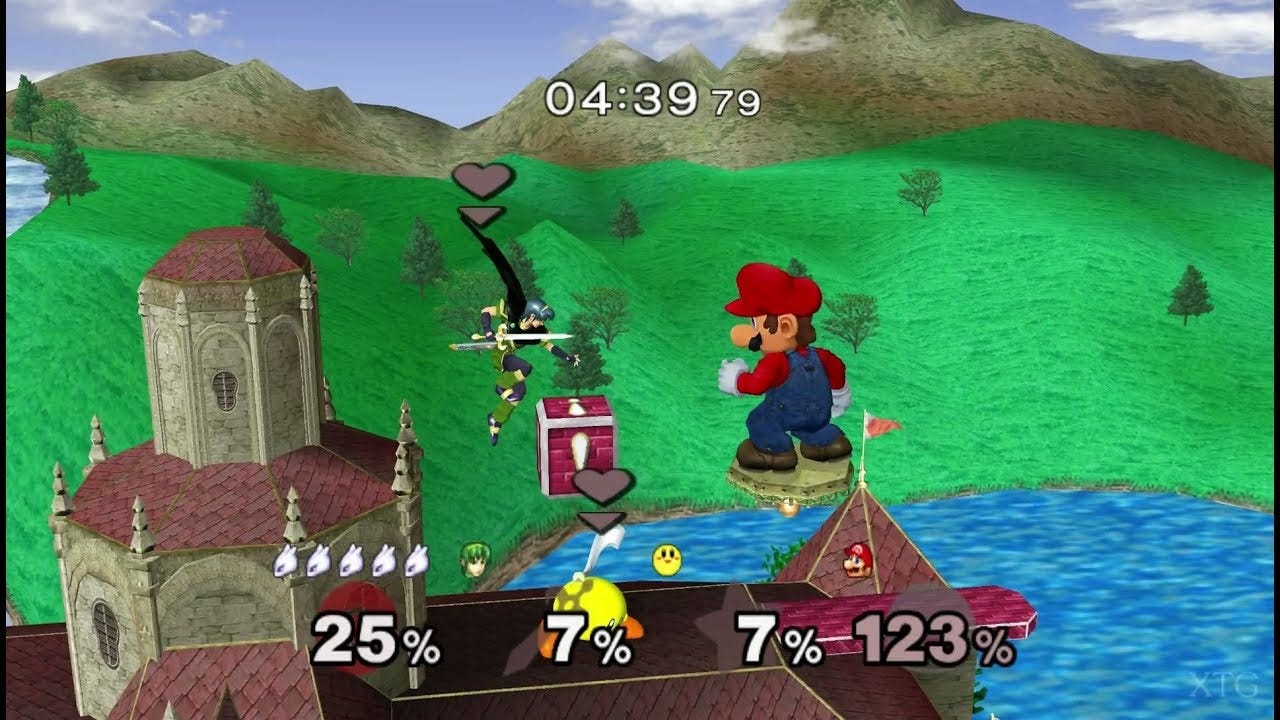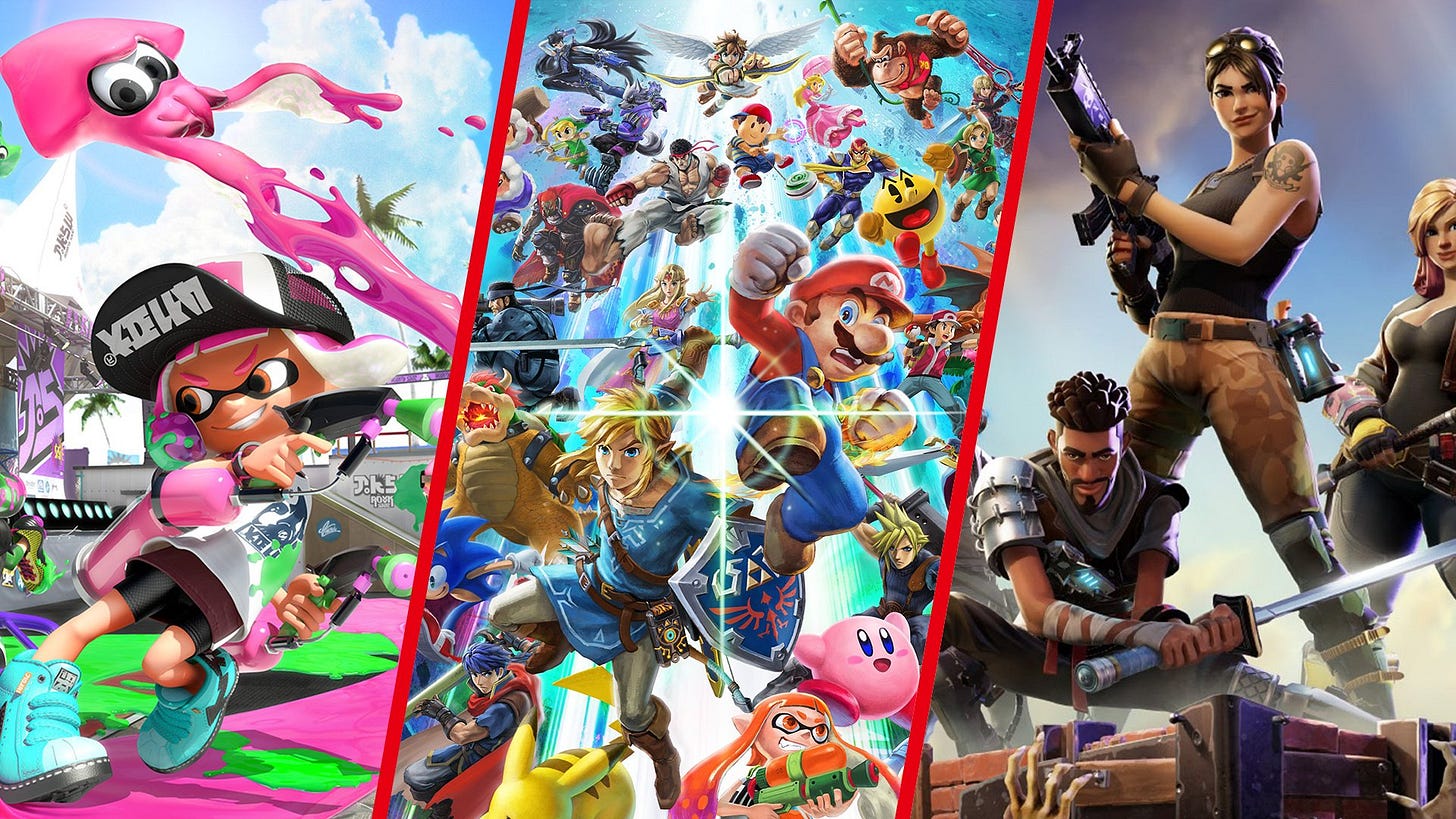🎧 How Ludwig Accidently Became the Biggest Streamer of all Time
How Ludwig "growth hacked" social media, YouTube vs Twitch, and why live streaming is the future of entertainment.
Back with another 🎧 newsletter!
In today’s newsletter I will deep dive into:
✔ How Ludwig ‘hacked’ social media for unprecedented growth
✔ YouTube vs Twitch
✔ Why live streaming is the future of entertainment
However, If you prefer reading, keep scrolling.
The Fastest Growing Streamer
Ludwig Ahgren started streaming in May 2018 and by April 2021 he was the most subscribed to streamer on Twitch, beating Ninja’s long standing record.
On Twitch there are three types of streamers: Skill-based streamers, entertainment streamers and those who fall in between.
While skill-based streamers can be entertaining, the main reason people watch them is because of their skill in a game, similar to how many people watch professional athletes play their sport.
Entertainment streamers on the other hand are not proficient in any particular game, but rather focus on providing entertainment value.
A lot of successful streamers fall somewhere in between, like xQc who originally was a professional overwatch player, and is still very skilled at many games, but draws viewers because he can merge entertaining gameplay with entertaining conversation.
This is also where Ludwig falls in. He was originally a dedicated Super Smash Melee player (although he himself never broke the top 100). However, where he shined was when he switched over to Melee commentary, where he could leverage his background as a college improv comedian. This skill proved extremely valuable when he started streaming.
Being able to improvise comedy and humour is a lot harder than delivering written comedy from a script, but is crucial to being a successful streamer since you have to be able to make any situation humoristic. The combination of quick wits and being a good gamer is a deadly combination.
Twitch vs YouTube
The biggest problem for new streamers is that Twitch is extremely saturated while also having incredibly poor discovery features.
In February 2021 there were 9.5 million streamers, but only 51 000 Twitch Partners. For reference being a Twitch Partner basically means that you have “made it” on Twitch. That’s 0.5% who make it, and the bar of becoming a partner isn’t exactly high: You need to average 75 viewers in the last 30 days. In other words, the competition is fierce.
And the biggest reason why it’s so hard to gain viewers is because of Twitch’s poor discovery features. Viewers are funnelled into top streamers channels or they go to streamers they already know.
Compare this to YouTube which is mainly consumed through recommended videos. This means that the YouTube algorithm can recommend viewers new content based on their watch history.
Live streaming has historically also been a rather niche genre. This means that the only people going to Twitch are those that are actively seeking out live streams. In comparison, YouTube and Facebook have roughly 2 billion and 2.7 billion existing users respectively on their platforms. This already established user base can then be funnelled into live streams. So users of YouTube might never have seen a live stream before, but be recommended one through the algorithm.
Ludwig’s Growth Hacking
And this was something Ludwig understood early. If he wanted to grow big on Twitch he needed to grow a user base on external sources and funnel them into his stream.
This was when Ludwig turned to YouTube. In 2019 he started uploading daily to YouTube and according to him it was the catalyst for his growth.
The reason for this is because YouTube, through it’s algorithm, has a built in growth mechanism. A YouTube clip can pop off through the algorithm, but a stream can’t. A brand new Twitch channel has no way of popping off, no matter the content, because no one will see it. This is because no one will be digging through thousands of channels with 0 viewers and stumble upon yours. However, a brand new YouTube channel with great content can pop off because of how the algorithm works. For Ludwig, every YouTube video is a lottery ticket that can generate outsized returns.
Also, the permanence of a YouTube video means that even if it doesn’t do well today, it might do well in the future and spur future growth. In contrast, no one really looks through an old Twitch stream. And even if they do, old streams are deleted after 30 days.
Ludwig didn’t make separate videos for YouTube, but rather used clips from his streams. However, by focusing on YouTube it made him start thinking in narratives and using a structured format in his streams to be able to take these clips and successfully grow on YouTube.
A lot of streamers think they can simply log onto stream and just play video games, grinding out hours, eventually breaking through and getting many viewers. However this is an extremely lazy way of streaming that basically guarantees that you are not going to succeed.
To make something entertaining you need a narrative. You need a clear introduction that states what will happen during the stream, the stakes, and the goal or end result. You need to set up what is happening, you can’t just log on and play Super Mario for hours on end and hope for success.
In comparison, Ludwig has shows. No matter what he is streaming, something is supposed to happen. This means that he has planned content with a specific goal in mind before he actually streams.
Whether it’s a chess tournament, playing among us, or a Pokémon card unpacking, the audience knows what will happen in that specific segment and what they will get out of it.
This outside traction from YouTube in combination with eventually being able to collaborate with other creators and partaking in events like Twitch’s Pogchamp Chess Tournament, and of course actually streaming a lot, allowed Ludwig to grow at an unprecedented rate.
The Subathon
So strategy has always been a big part of Ludwig’s streaming career and this leads us to how he was actually able to break Ninja’s previous record.
After taking an 11 day vacation from streaming, Ludwig announced that he would do a Subathon to kick off that he’s streaming again.
So what is a Subathon? Subscribing to a Twitch stream costs money, you give the streamer $5 to basically say “Hey, I like your stream and what you’re doing!”, and a Subathon is basically a gamification tactic of acquiring subs.
During a Subathon a countdown clock is started and for every sub gained time is added to the clock, viewers are paying to extend the stream. Usually a Subathon lasts for 24-48 hours and then it either naturally tapers out or the streamer sets a time limit for when it will end.
However, Ludwig decided to not set a time limit for his Subathon, figuring that it would eventually taper out, but viewers went wild and the stream just kept on being extended.
This resulted in Ludwig sleeping, eating, and even showering on stream.
After several days of time being added to the clock, Ludwig decided he had to put an end to it. He set a limit for 30 days. However, this was not just a random number, it was actually the exact amount of subs that would be needed to surpass Ninja’s old record if successful.
On several occasions the time was close to running out only for someone to sub in the last second. And the stream kept on going.
On April 13th 2021, after 30 days of non-stop streaming, Ludwig surpassed Ninja’s long standing record, a feat no streamer had ever come close to, hitting 283 thousand subs having started at only 30 thousand a month earlier.
Streaming Is the Future of Entertainment
Video games and communities are related.
Think about the history of man - the earliest form of entertainment came from us gathering around campfires, sharing stories and songs, interacting with each other.
It’s only in the last century that broadcast entertainment (radio, TV, internet) has taken over and interactive and shared entertainment has taken a back seat.
The vast access to broadcast entertainment like movies, tv shows and music albums, has led to a separation between consumer and creator. Instead of us creating and experiencing entertainment together, the relationship has become a one way transmission where a smaller class of professional creators create and the rest of us consume.
The amount of entertainment options today is larger than ever, yet it’s easier than ever to consume entertainment alone and our communities are bearing the consequences. As I talked about in a previous newsletter, we are facing a loneliness epidemic. For instance, the number of people reporting at least 2 close friends is at an all time low and a likely contributor to this is that so much of our entertainment can be consumed alone.
However, there is one trend that is reversing this separation of society where you consume content by yourself - modern multiplayer video games.
To some this might sound strange, but video games of today are very different than the solitary activity of 20 years ago.
These multiplayer games are like the shared campfires of the past, where everyone shares an interactive and entertaining environment. These campfires are deeply complex, intellectually stimulating and intrinsically social with huge thriving online communities.
2.5 billion people play video games across the world and it’s maybe the largest form of entertainment where consumption actually requires human connection.
And this leads us into streaming. Why do people stream themselves playing video games and why do hundreds of millions of people watch them?
It’s not any different than watching your favourite sport or any other interest that is entertaining and engaging. If there is an activity you enjoy you are probably going to like watching other people to it with skill. But this isn’t like watching football at home by yourself, rather imagine watching it at a bar filled with other people. All of them commenting, cheering and talking about what is happening in the game. This is what live streaming is.
Gamers are naturally expecting live interactive entertainment and passive consumption just isn’t as fulfilling. This is why live streaming has taken off with video games, it offers the same type of interactive feeling, the same campfire feeling that our ancestors had. Some of these campfires are small and intimate where everyone knows each other, and some are huge bonfires with hundreds of thousands of people.
However, in contrast with watching sports in a bar where only the audience have a connection, in live streaming the audience can actually interact with the streamer, influence what is happening and co-create the experience along with them. It truly is a multiplayer experience.
Even if live streaming started with gaming, it doesn’t end there. It will naturally spread to other areas and this will unlock incredible amounts of talent for all of us. We are already seeing this for cooking, singing and even woodworking.
For older generations, there is a clear line between the entertainer and the entertained: You’re either the actor in the movie or the audience watching the movie.
However, this line is not as clear cut for younger generations: On YouTube, about 1 in 1000 users produce content, on TikTok it’s 1 in 4. For the younger generation, it is becoming increasingly natural to move freely between consumption and creation.
All this is going to happen around the metaphorical campfire and millions of these campfires will pop up during the coming years on any topic you can imagine. This will enable people around the world to bond over shared interests and create strong communities.
For most of our history our entertainment has been interactive and multiplayer, but somewhere along the way we lost that two-way conversation and it turned into a one-way transmission. Thanks to live streaming we are now reversing that trend.
Did you enjoy this newsletter? Please subscribe if you already haven’t!









